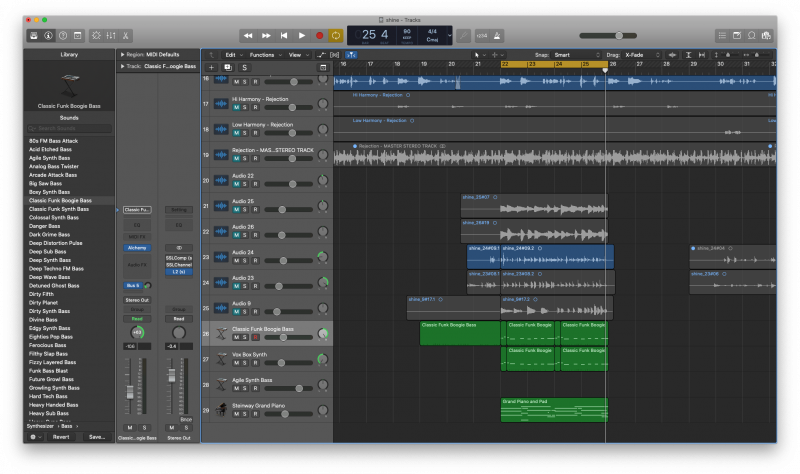Explore guitar accompaniment insights from my 38-year journey as a composer and artist. Addressing frustration…
Tips on Harmonizing Chords and Melody, ( live stream 11-03-2022)
Introduction
Embark on a journey where chords and melody meet. Learn how chords enhance melodies with clarity. This hands-on approach helps you harmonize chords and melodies, master key changes, and create captivating compositions. Discover the magic of open and closed triads. Dive into the art of harmonizing, crafting mesmerizing grooves. Experience this musical fusion where chords and melodies unite to captivate listeners. This video unveils key concepts taught in all our guitar lessons and courses.
Are Your Chosen Chords Elevating Your Melody?
Today, we’re going to discuss selecting the appropriate chords for your composition. As songwriters, composers, or arrangers, we might sense that our song, whether performed live or recorded, could use a touch of enhancement.
This feeling might stem from factors such as performance, lyrics, structure, tempo, or groove. However, one of the key elements that truly defines a song’s essence is how the chosen chords harmonize with the melody. Are the chords we employ elevating the melody? Are they enhancing the quality of the vocal line?
Unlocking Harmonic Options: A Practical Approach
If in doubt, I suggest the following approach to comprehend our fundamental harmonic choices. This will eventually aid us in refining our understanding and conveying our intended message more effectively.
The initial objective is to grasp these fundamental harmonic choices by identifying the key and the chords at our disposal within any song. If you’re uncertain about the chords in a song, start by setting aside all the chords. Focus solely on the melody and follow these steps: Listen to the melody.
What is the Key?
So, as we listen to the melody, we’ll identify the key. Take a moment to change the camera angle so you can see me from the side. Now, from all the notes we’ve sung, let’s focus on the note that gives that sense of resolution – the one that feels like home.
Identify the note that serves as the resting point – the key note.
Now that we know the key and the song’s resting point, we can proceed to determine all the chords that revolve around this pivotal note.
Unlocking Chord Options for Composition
This approach opens up other options within the song and helps us establish a more consistent chord relationship. This, in turn, makes playing more enjoyable. We’ve established that the tonal center is C. Is it C major or C minor? Let’s start with a major chord. Yes, it’s major. Now, let’s try a minor chord.
However, that doesn’t fit quite right. Despite having an E natural in the melody, it suggests a C major chord. So, now that we know it’s a C and a major chord, we need to identify the specific type of major chord. We’re aware that major chords appear on the 1st, 4th, and 5th degrees of the scale.
How to Determine the Mode
So, the C major chord can actually be found in the C scale on the one. It can also be found in the G scale on the four: G, A, B, C. Furthermore, it is present in the F scale on the five: F, G, A, B, C. Now we need to consider and choose which one is the right fit.
How to Determine the Mode My suggestion is to play the melody and fill it in with the scale. Let’s start by discussing the melody with the C scale: Two, three, four. Does it sound correct? Now let’s try discussing it with the G scale, filling in the gaps: One, two, three, and four.
Next, let’s explore the final scale, the F scale. As we already know, the tonal center is C, and now we’ll examine that C within the context of the F scale: One, two, three.
This approach sounds better, really nice. So, I would conclude that this song revolves around the C note as the tonal center, and all the chords used to highlight that C come from the F scale. These are the chords we now have from the F scale
Unveiling Harmonic Choices:
Scene One: Let’s Dive In Alright, here we are, ready to uncover the chords that have their roots in the F scale. Now, pay close attention to that C chord. It’s holding its own as the fifth chord in the scale and taking on the persona of a dominant C seventh. You know, those dominant chords that bring a unique four-note harmony to the mix, especially when surrounded by a sea of triads.
Consider this the foundation of harmony, keeping our sound smooth and perfectly balanced.
Picture the C seventh chord as the center of attention, flanked by the triads that emerge from its own scale. And guess what’s hanging out nearby? The D minor, the enigmatic E diminished, the familiar F, the moody Gm, the expressive Am, and the soulful Bb. These are the chords we’re rolling with.
Now, let’s swing the spotlight back to the camera and keep this musical journey flowing.

Harmonizing Chords and Melody: Stage One
Now, let’s delve into the melody and explore the synchronization of chord changes within it. In simpler words, how do we align chords with the melody?
First, let’s establish the key – la la la, counting one, two, three, four…
Essentially, chord changes occur right on the first count. To kick things off, our initial chord is C. Soon after, it’s time for a change. Let’s dive into testing each of these alternative chords one by one… 2, 3.
Alright, Dm is a contender, and following that, we encounter the Edim chord.
Unfortunately, that didn’t quite resonate well. The next chord in the sequence is F.
Ah, now that’s sounding more pleasing. Let’s venture into the next candidate – Gm, 2, 3, 4.
Well, that’s quite appealing. It introduces a nice contrast between the opening and the subsequent bars. Moving onward, the remaining chord to consider is Am, 1, 2, 3, four. Regrettably, that didn’t blend harmoniously. There seemed to be a clash between the higher notes and the chord’s tone. Lastly, we approach the Bb chord, 1, 2, 3, 4.
Alright, that actually felt pretty solid!
Alright then.
Our next move entails playing alongside the recording. This will allow us to hear these two chords in action and determine if any further adjustments are required.
Alright, here we go. I’ll perform it once, and with the loop in action, I’ll incorporate the chords during the second repetition.
Harmonizing Chords and Melody: Stage Two
That sounded quite pleasant. I sense a different element in the melody, and I believe I need something more to enhance it. It’s around the third finger position where I feel the chord should transition.
So, following the same approach as before, I explored all the available options. Starting from C, I moved through Dm, Edim, F, and so on.
Dm didn’t yield a pleasing result.
Next, I tested the E diminished chord. It seemed to work, introducing a touch of tension before resolving to the F on the third beat.
However, transitioning to F didn’t fit, as F was the upcoming chord for the next bar.
Considering the structure—C for 4 beats, F for 4 beats—I needed a change on the third beat. So, I experimented with G minor: 2, 3, 4.
Ultimately, I settled on playing C for 2 beats and then shifting to Gmin on beat number 3. This change was crucial to introduce variety. Gm lacks the notes of the C chord, creating a distinct harmonic tension.
Moving to the F chord, I maintained the same approach by altering the harmonic tension on beat number three. In this case, I used a Bb. The result sounded like this.
This process delves into the intricacies of harmonizing chords and melody.
Now, let’s experience it in context. Let’s play this arrangement with the band

Enhancing Songs with Melodic Chord Progressions
Alright, I’m liking this approach. Now, we’ve got our chords that are working harmoniously to enhance the song’s quality, infusing more melody-driven movement. This, in turn, will give the song a smoother flow.
Now, let’s dive into the remaining instrumentation and arrangement elements.
Our chord progression is as follows: | C Gm | F Bb |
The Bass Line Our bass line’s aim is to underline the chords within the lower range, while simultaneously crafting a rhythmic and melodic foundation.
Here’s the line I’ve come up with: 1, 2, 3…
Let’s play it.
Playing Chords on the Guitar Now, as we move on to incorporating the guitar, it’s crucial to consider how we’ll approach playing the chords.
When it comes to playing the chords, keep in mind that you can play them with one note, two notes, three notes, or four notes for seventh chords.
We’ll begin by constructing a melodic line using just one note. Remember, the chords serve the purpose of establishing the groove.
After careful consideration, I decided to convey the chords through individual notes. I came up with this line:
An ostinato pattern over the C chord and a shift to b7 over the F chord.
This produces a captivating and repetitive motif.
Let’s give the recording a listen.
Enhancing Song Harmony with Melodic Chords: Exploring Triads and Groove
Feels good. Now we’ve got the groove going well, and the bass line is defining the chords in a melodic manner, giving it a very independent sound.
The guitar plays the chords in a melodic line, adding a nice groove to it, like a pleasant ostinato.
Exploring Passive Closed and Open
Triads Then I delved into what else was needed to make this song sound complete. I realized that clear chords were essential. By clear chords, I mean chords that follow the harmonic series, specifically referring to triads. These triads could be either closed, fitting within an octave, or open, with one note dropped an octave.
A closed triad would sound like this.
An open triad, on the other hand, sounds wider and equally clear. Notably, I’m not strumming these conventional chords. Strumming wouldn’t add clarity; it would instead mask a significant portion of the drum sounds.
Another way of achieving this flow is by defining the chords with melodic lines, much like I did a few seconds ago. We can choose to play the chord and let it layer, in a way that it gently floats. The outcome is the piece I recorded with a piano.
Let me loop it and play it once more
Today’s Exploration: Harmonising Chords and Melodies
In this session, we delved into the process of breaking down a melody to its core essence, allowing us to discover the potential for enhancement through harmonization. Let’s recap the journey we embarked upon.
Unveiling the Melody
We began by isolating the melody itself, setting aside any accompanying chords. This stripped-down rendition of the melody provided a clear canvas to explore potential harmonic additions.
Discovering the Tonal Center
Our next step was to identify the tonal center of the melody. After identifying it as C, we determined that the tonality was major.
Narrowing Down the Major Mode
Exploring further, we recognized that there were three major modes to consider: the 1, the 4, and the 5. Each of these modes produces distinct sonic qualities. In this case, the C chord of the F scale resonated with the melody.
Mapping Chord Changes
A vital part of our process was outlining the progression of chords. We established that a chord change would occur at every bar, transitioning from C to F.
Introducing Additional Chords
Sensing a need for movement within the chords, especially on beat number 3 of each bar, we introduced alternative harmonies. These chords diverged from the previous ones, providing dynamic shifts. The chords introduced were C, Gm, F, and Bb.
Layering Chords in Harmony
Transferring our work to a band setup, we explored how to craft a bassline that melodically defined chords and contributed to a compelling groove. We integrated rhythm through chords played on the guitar, selecting between one, two, three, or four-note versions.
Crafting a Melodic Chord Line
Opting for a one-note approach, we fashioned a melodic chord line. This foundation opened space for layering triads and open triads, without resorting to strumming. This approach offered unparalleled clarity, creating a harmonious interaction with the melody.
Achieving Clarity and Depth
By skillfully weaving in the melodic lines of the bass and other instruments, and utilizing an ostinato for rhythmic flair, we constructed a rich tapestry of sound. This provided a perfect backdrop for the vocal line to shine forth with utmost clarity.
In Summary
Our expedition, encompassing melody deconstruction, tonal center identification, and harmonising chords and melodies while nurturing intricate layers, culminated in the formation of a composition both harmonically rich and melodically vibrant.


